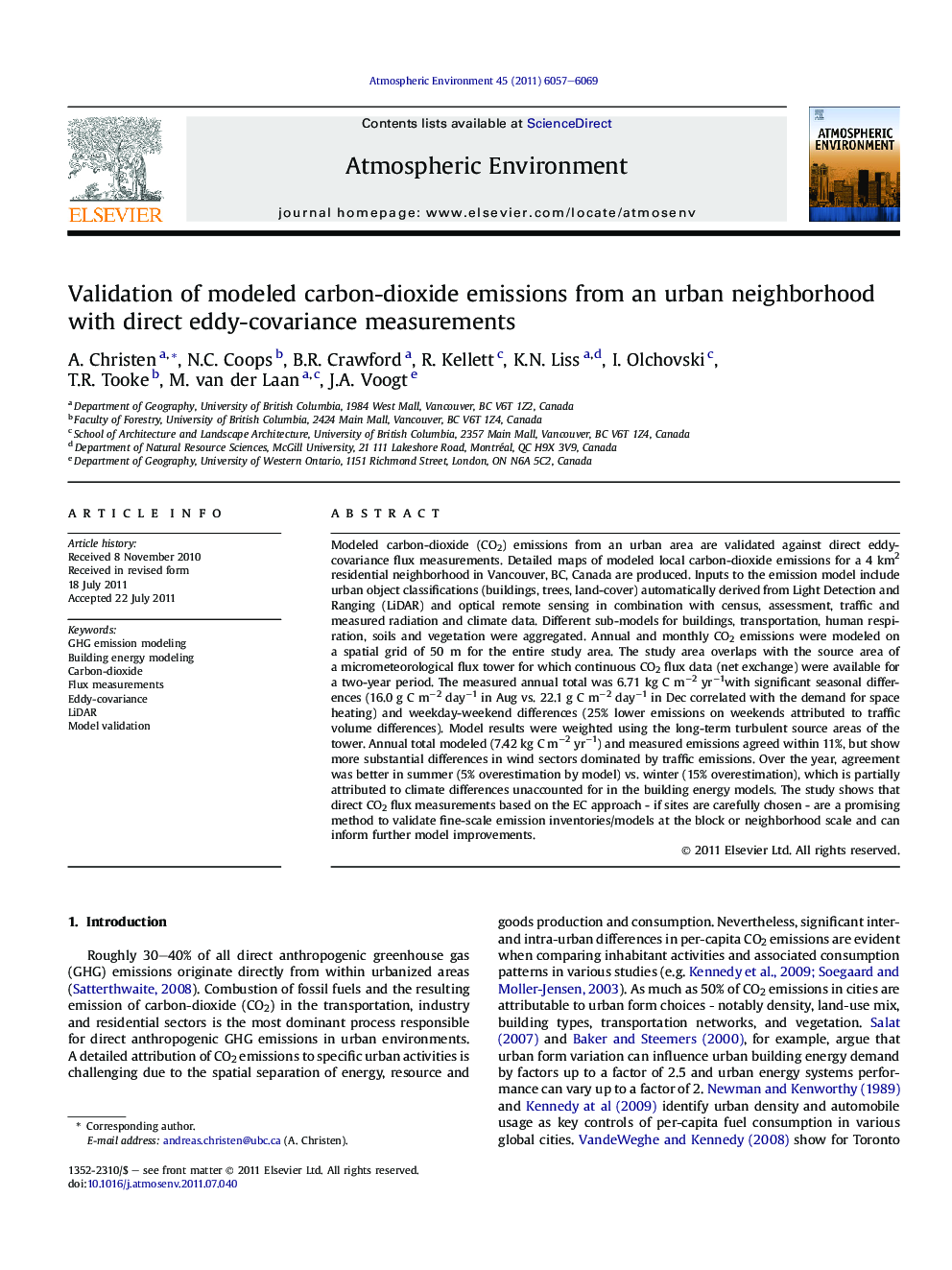| کد مقاله | کد نشریه | سال انتشار | مقاله انگلیسی | نسخه تمام متن |
|---|---|---|---|---|
| 4439323 | 1311014 | 2011 | 13 صفحه PDF | دانلود رایگان |

Modeled carbon-dioxide (CO2) emissions from an urban area are validated against direct eddy-covariance flux measurements. Detailed maps of modeled local carbon-dioxide emissions for a 4 km2 residential neighborhood in Vancouver, BC, Canada are produced. Inputs to the emission model include urban object classifications (buildings, trees, land-cover) automatically derived from Light Detection and Ranging (LiDAR) and optical remote sensing in combination with census, assessment, traffic and measured radiation and climate data. Different sub-models for buildings, transportation, human respiration, soils and vegetation were aggregated. Annual and monthly CO2 emissions were modeled on a spatial grid of 50 m for the entire study area. The study area overlaps with the source area of a micrometeorological flux tower for which continuous CO2 flux data (net exchange) were available for a two-year period. The measured annual total was 6.71 kg C m−2 yr−1with significant seasonal differences (16.0 g C m−2 day−1 in Aug vs. 22.1 g C m−2 day−1 in Dec correlated with the demand for space heating) and weekday-weekend differences (25% lower emissions on weekends attributed to traffic volume differences). Model results were weighted using the long-term turbulent source areas of the tower. Annual total modeled (7.42 kg C m−2 yr−1) and measured emissions agreed within 11%, but show more substantial differences in wind sectors dominated by traffic emissions. Over the year, agreement was better in summer (5% overestimation by model) vs. winter (15% overestimation), which is partially attributed to climate differences unaccounted for in the building energy models. The study shows that direct CO2 flux measurements based on the EC approach - if sites are carefully chosen - are a promising method to validate fine-scale emission inventories/models at the block or neighborhood scale and can inform further model improvements.
► Detailed maps of local carbon-dioxide emissions were modeled for a 4 km2 urban area.
► Maps are compared to two full years of direct eddy-covariance (EC) measurements on a tower.
► Modeled annual total carbon emissions agree within 11% with tower measurements.
► Higher differences found in sectors with arterial roads and during heating-period.
► EC measurements are a promising method to validate spatial emission inventories.
Journal: Atmospheric Environment - Volume 45, Issue 33, October 2011, Pages 6057–6069